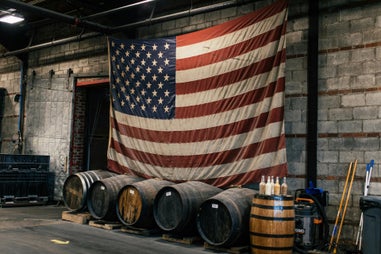
In 2025, the "Made in America" label is no longer just a nostalgic symbol of the past—it's a powerful signal of quality, resilience, and economic rebirth. After decades of offshoring and chasing cheaper labor abroad, American manufacturing is seeing a real resurgence across multiple industries, from fashion and furniture to tech and transportation.
So what’s driving this comeback? A mix of economic, social, and technological forces. Consumers have grown more conscious of where their products come from. They’re no longer just buying—they're voting with their dollars. Supporting local businesses, reducing environmental impact, and investing in community growth have become major buying motivators in this post-pandemic economy.
Global supply chain disruptions in recent years exposed just how vulnerable overseas production can be. From delayed shipments to skyrocketing freight costs, many businesses found themselves in trouble with little control over their timelines or inventory. Re-shoring production to the U.S. gives brands back that control—and offers peace of mind to their customers.
Technology has also played a huge role in this revival. Automation, robotics, and smart manufacturing have dramatically reduced the labor costs that once made American production less competitive. Today, small factories using lean methods and high-tech tools can compete on speed, quality, and even price.
In industries like apparel, the shift is cultural as much as logistical. American consumers are growing tired of fast fashion’s waste and unethical practices. American-made clothing lines—especially those championing sustainable, slow fashion—are finding loyal followings. These brands aren’t just selling clothes; they’re telling stories of craftsmanship, community, and integrity.
For small business owners and entrepreneurs, manufacturing in the U.S. offers creative freedom and faster product development. There's no long wait for overseas prototypes, no lost-in-translation issues, and no costly international shipping delays. Designers can iterate, test, and launch quicker when their supply chain is just a few states away.
There’s also a renewed sense of pride in local craftsmanship. Towns and cities once left behind by globalization are being revitalized by new manufacturing ventures. From Detroit’s auto tech to North Carolina’s textile mills, communities are seeing a rebirth of jobs, trade skills, and ownership.




Government initiatives and incentives have played a role as well. Tax breaks, grants, and public-private partnerships have encouraged startups and legacy brands alike to invest in domestic production. Many state-level programs now offer additional support for minority-owned and veteran-owned manufacturing businesses.
In tech and electronics, national security concerns have sparked increased interest in domestic production. More companies are building their chips, drones, and devices on American soil to reduce dependency on foreign sources and ensure tighter data control. This is creating new jobs and sparking innovation in high-tech zones around the country.
Even in food and beverage, “Made in America” is experiencing a boom. Craft coffee roasters, peanut butter companies, gourmet snack brands, and independent beverage producers are proudly labeling their products with American sourcing and processing. Consumers are buying not just for the taste—but for the transparency and traceability.
Online marketplaces are also helping this movement thrive. Platforms like Etsy, Faire, and Shopify have given local makers and manufacturers direct access to global consumers. American-made brands can now scale without needing retail shelf space, making niche products and artisan goods more accessible than ever.
However, this comeback isn't without its challenges. Labor shortages, high startup costs, and ongoing inflation continue to affect growth. But many brands are rising to the occasion by training new workers, offering fair wages, and using innovation to lower production costs over time.
Ultimately, “American-made” in 2025 represents more than location—it represents values. It stands for quality over quantity, relationships over transactions, and resilience over convenience. Consumers want to know the hands behind the products they buy. They want accountability, transparency, and trust.
The return of American manufacturing is not a fleeting trend—it’s a foundational shift. For entrepreneurs, creatives, and conscious consumers alike, this comeback isn’t just patriotic—it’s practical, powerful, and filled with potential for long-term growth and impact.


Add comment
Comments